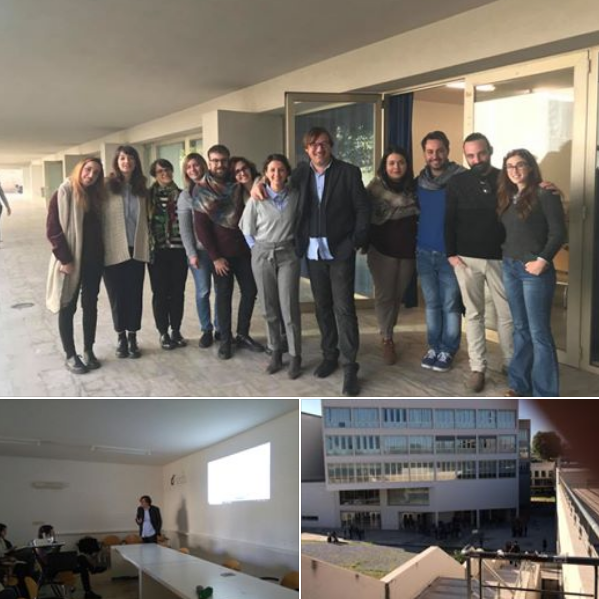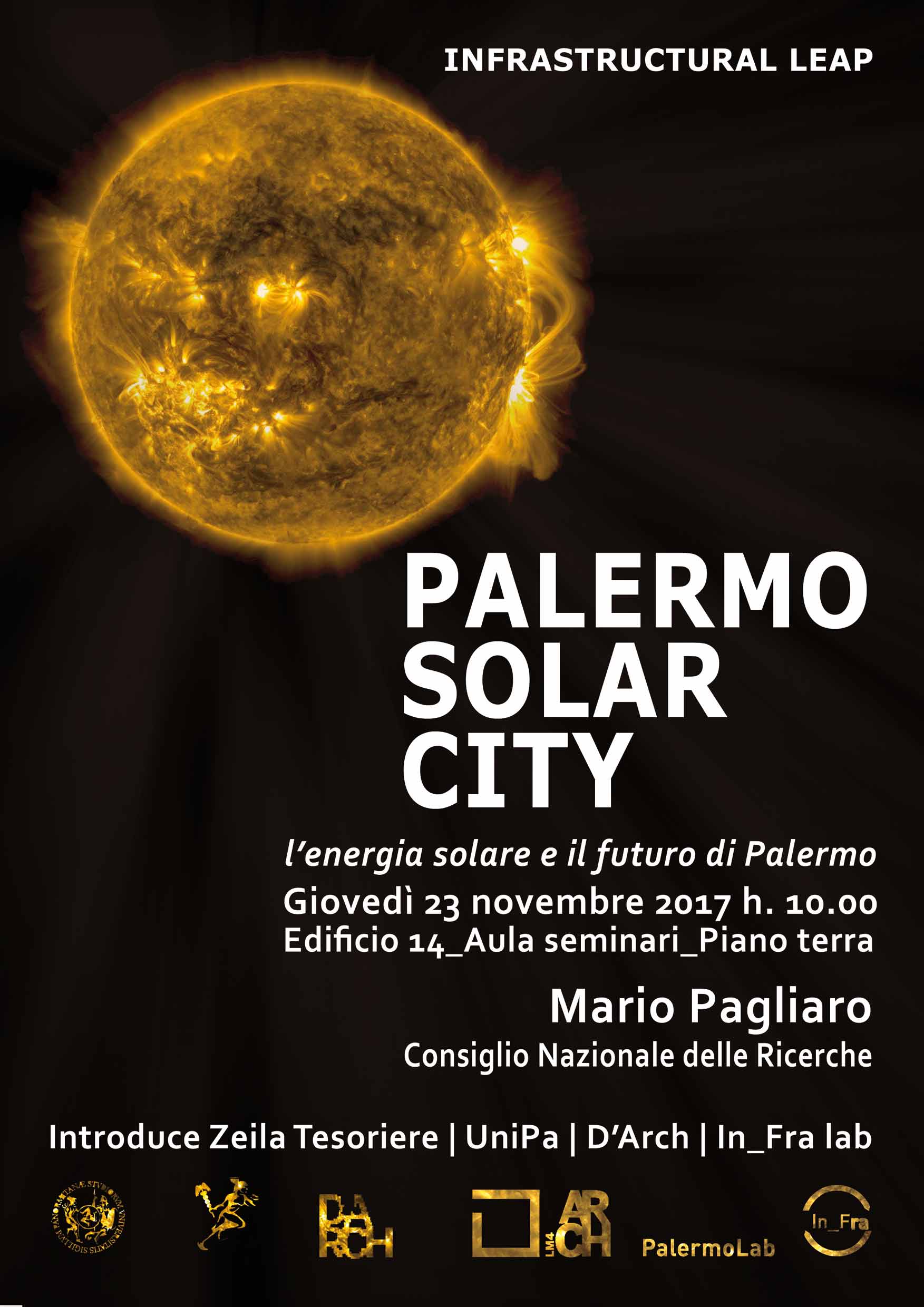
 23-Nov-2017
23-Nov-2017
- Invited by Palermo's University,
Mario Pagliaro
has
delivered today a lecture on the energy transition for the city of
Palermo, Sicily, from fossil to renewable energy to the advanced
scholars of the
Infrastructural leap course of the D'Arch Department.
The lecture was given in the context of Manifesta, a European
contemporary art biennial aiming to work with local communities
(including the city's University) in order to rethink the basic
architectural and urban structures of the city via cultural
intervention, whose
12th edition will be held in Palermo between June 6th and November 4th, 2018.
Dr Pagliaro gave on overview of how energy is produced and
consumed in Sicily's largest city, and suggested avenues on
how
to reshape the energy system evolving from widespread utilization of
thermal engine cars and buses to electric cars and buses accompanied by
near future widespread use of existing buildings' surfaces as renewable
energy generators in such a large amount as to
realistically end the era of fossil fuels and enter the solar economy era within the next ten years.
Dr Pagliaro presented the students with the
outcomes of the
Sicily Solar Report 2017
published on the same day in which his and Dr Meneguzzo's teams show
how by simply installing 5 kW of PV (photovoltaic) power on each of
Sicily's 1,722 million buildings, Sicily will be able to generate 8,61
GW of PV power, namely enough power to generate yearly over
11 billion kWh.
Since solar PV systems are currently installed in Sicily at
€1,400/kW for domestic arrays, and €950/kW for systems above 200 kW, he
further explained how the transition, now
fully feasibile from economic and technical viewpoint, will be
inevitable.
When a modest
revamping of its current 1,500 wind turbines from the current 1 MW average power to
2 MW will be completed, Sicily will generate another
6,13 TWh
yearly. Together, only the wind and PV energy generated every year in
Sicily, without any extra soil consumption, would amount fo
over 17,3 billion kWh - namely enough energy to meet Sicily's current electricity needs
(16.84 billion kWh in 2016).
All estimates, he explained, are largely conservative because the
equivalent number of hours of PV systems used (1298 h, namely the value
for Sicily's PV plants in 2016) was largely constrained due to the
insufficient capacity of Sicily's current
high-voltage transmission grid - whose improvement and expansion is currently underway.
Once completed, not only Sicily's but also Malta's electricity needs
(currently importing 68% of its electricity from Sicily through a submarine
interconnector) will be met by renewable energy only.
Including a break, the lecture lasted more than 3 hours, with several
thoughtful questions posed by the students also thanks to the atmosphere provided by the organizer,
Professor Zeila Tesoriere, encouraging students' questions and direct involvement in a truly
question‐driven classroom.
Dr Pagliaro sits
frequently on international PhD evaluation committees and
regularly evaluates
research projects for leading research agencies. His and Professor Meneguzzo's teams have lately devised a
transition rooadmap to Italy 100% renewable by 2050.

 23-Nov-2017
- Invited by Palermo's University, Mario Pagliaro
has
delivered today a lecture on the energy transition for the city of
Palermo, Sicily, from fossil to renewable energy to the advanced
scholars of the Infrastructural leap course of the D'Arch Department.
23-Nov-2017
- Invited by Palermo's University, Mario Pagliaro
has
delivered today a lecture on the energy transition for the city of
Palermo, Sicily, from fossil to renewable energy to the advanced
scholars of the Infrastructural leap course of the D'Arch Department.